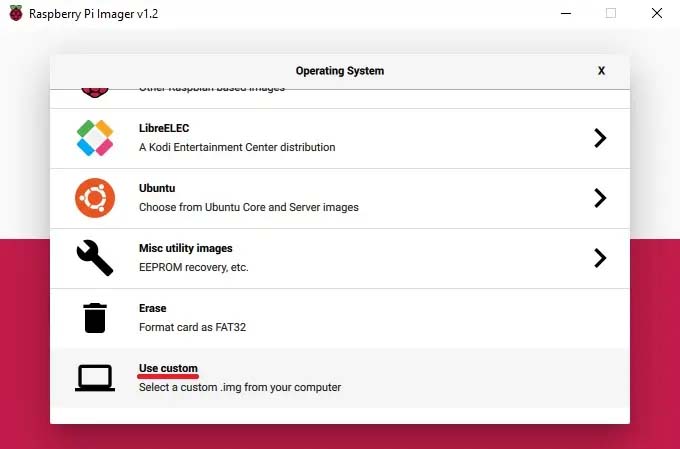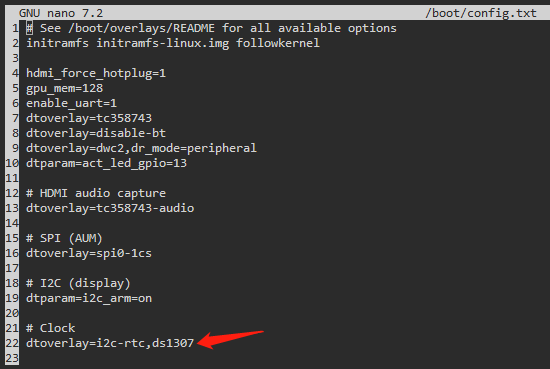|
|
|
|
|
|
PiKVM is a Free and Open
Source Software that is released under the GPLv3 license. The
Operating System (OS) image provided here is solely for the purpose
of hardware testing. For commercial use, it is advised to directly
contact the developers of PiKVM.
The development of this software would not be possible without the
financial backing of the community. Contributions play a vital role
in sustaining and advancing the project. If you wish to contribute,
you can visit the PiKVM donation page at
https://pikvm.org/donate/.
Your support is greatly appreciated and will help in the continuous
development and improvement of this software.
|
|
|
|

*Compatible with PiKVM V3 platform OS version
only, not support V4 |
|
|
|
|
|
| |
| |
How to install Raspberry
Pi Imager
Raspberry Pi Imager is free to install from
the official Raspberry Pi website. It's available
for MacOS, Windows, and Ubuntu systems.
1. Visit the
Raspberry Pi download page.
2. Download the
Raspberry Pi Imager installer for your Operating
System.
3. Run the
installer and follow the prompts to complete the
setup.
Write a Raspberry Pi Imager built-in image

1. Launch
Raspberry Pi Imager.
2. Click Choose OS.
3. Select Use custom to write an
unlisted image.
4. Click Choose SD card.
5. Select from the list the SD card you want to
write to.
6. Click Write to begin the image
writing process.
When the imager is finished,
you can connect your microSD card to the Pi and boot
it up.
Raspberry Pi Imager alternatives
If for whatever reason you
don't want to or are unable to use Raspberry Pi
Imager, you can opt to use an alternative
application. Here are a couple we've relied on over
the years leading up to the new imager release.
-
balenaEtcher - The application
runs on Windows, MacOS, and Ubuntu operating
systems.
- Win32
Disk Imager - This imaging software is
designed for Windows machines.
|
|
|
| |
|
|
| |
| |
1. Access to web interface
Access to PiKVM Web Interface via any
browser with the URL
https://pikvm/ OR
https:// IP address
of your ipkvm/ .

2.
Log in to PiKVM and click Terminal
:
3. Get root access (enter the root
password: root ).
|
[kvmd-webterm@pikvm
~]$
su |
|
4. To enable write-mode
|
[kvmd-webterm@pikvm
~]$
rw |
|
5. Run the following command to
enable OLED
|
[root@pikvm
kvmd-webterm]#
systemctl enable --now kvmd-oled
kvmd-oled-reboot kvmd-oled-shutdown |
|
6. Setting up the RTC
|
[root@pikvm
kvmd-webterm]#
nano /boot/config.txt |
|
The RTC chipset is DS1307, please change the line22
from dtoverlay=i2c-rtc,pcf8563 to
dtoverlay=i2c-rtc,ds1307

7. Save and exit by hitting CTRL + X, answering Y and hitting Enter when
prompted.
8. Rotate the OLED display by 180
degrees (Optional)
|
[root@pikvm
kvmd-webterm]#
nano /usr/bin/kvmd-oled |
|
Change the line: return
{"height": 64, "rotate": 2}
to return
{"height": 64, "rotate":
0}
Before change

After change

8. Save and exit by hitting CTRL + X, answering Y and hitting Enter when
prompted.
9. To disable write mode
|
[root@pikvm
kvmd-webterm]#
ro |
|
10. Reboot the system
|
[root@pikvm
kvmd-webterm]#
reboot |
|
|
| |
|
| |
|
CSI-2 bridge
connection test |
|
|
| |
|
| |
Make sure that the ‘/dev/video0’
device is available. Use this command to check:
|
[kvmd-webterm@pikvm
~]$ ls /dev/video0 |
|

If you see anything other than ‘file not found‘,
then it’s available.
|
| |
|
|
|
|
|
|

